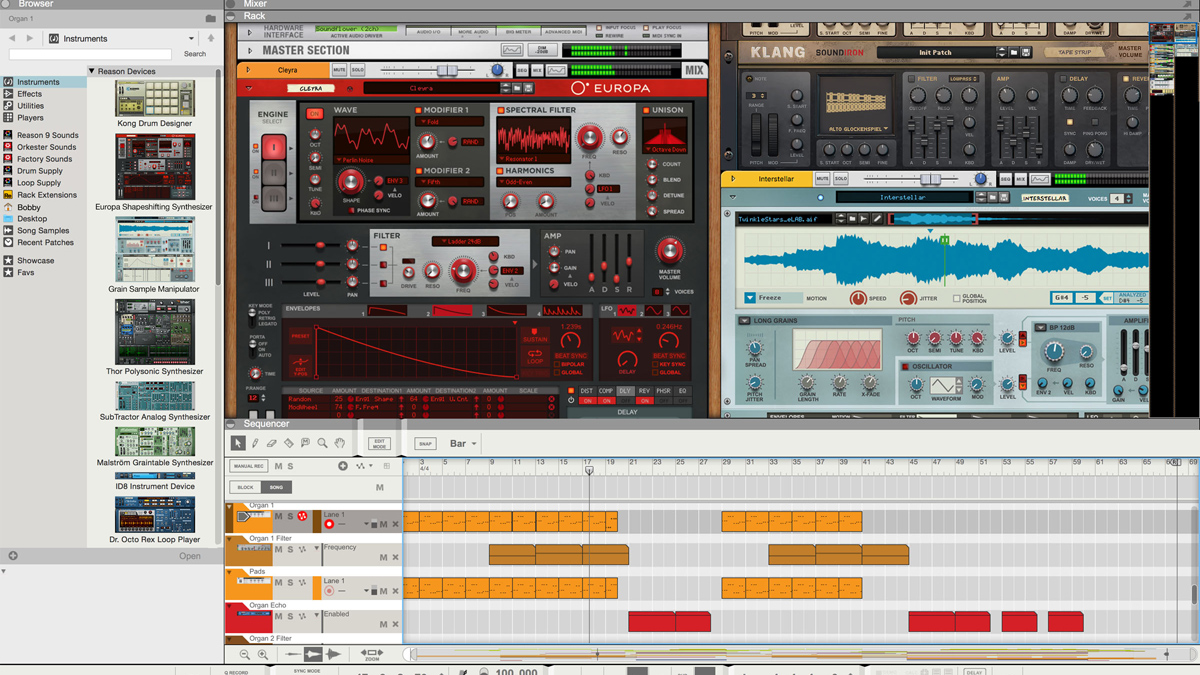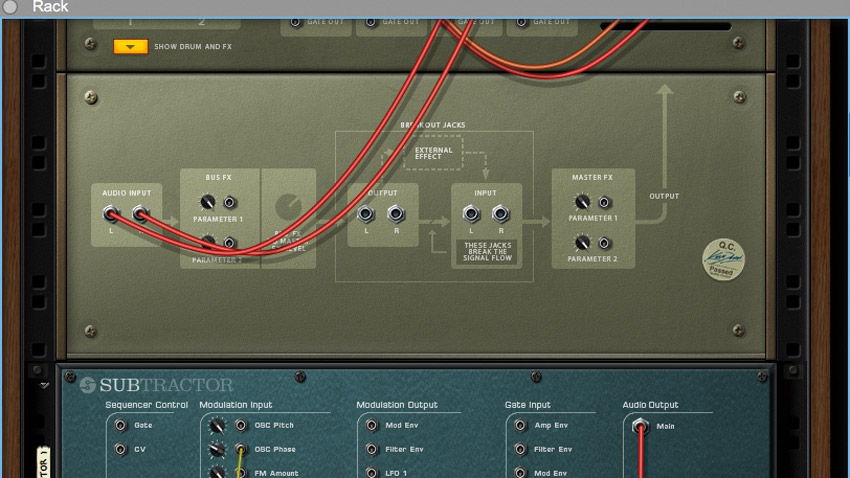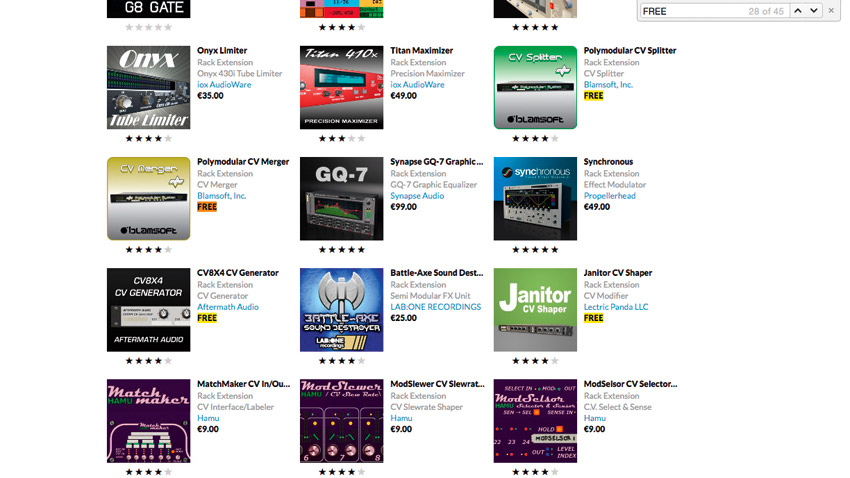10 rock-solid Reason power tips
Take full command of the veteran virtual studio with our tricks and techniques

Having started life as a fairly simple software studio, Propellerhead's Reason is now a seriously powerful DAW.
With version 10 now in the hands of users, we've put together 20 ways that you can spice up your rack life.
1. 19 with a bullet
If you’re worth your salt, you’re probably using the NN-XT sampler over the older NN-19. But if you’ve realised what the NN-19 can do that the NN-XT can’t, you’re truly a master sensei of Reason. Right-click or Alt-click almost any parameter on ’19 and you can automate it, giving you access to controls for the LFO, Filter, Pitch, Portamento, and more, including the Sample Start control for some retro stretch techniques! It’s pronounced “n-n-nineteen”, by the way, after the Paul Hardcastle track 19 - betcha didn’t know that.

2. The desired effects
Mälstrom, Thor and Kong can be used as effects processors as well as instruments. In Mälstrom, flip the rack to find the Audio input, and you’ll get access the filters for the left and right channels, the Spread control, and Modulator B. In Kong, route your signal to the Audio Input and you’ll get access to its Bus FX and Master FX sections. With Thor, send a signal to its audio inputs and use the mod matrix to route Audio InL and Audio InR to Filter3. As well as the filter, you can use Thor’s Chorus and Delay modules, as well as its second LFO to control them.
3. QWERTY takeover
Like all DAWs, you can control Reason with a connected MIDI controller, but Propellerhead’s rack also takes a variety of commands from your QWERTY keyboard if you let it. Head to Options, activate Keyboard Control Edit Mode, and select a device in the rack. Every arrow represents a parameter that can be mapped to a QWERTY key to switch it on or flick it between minimum and maximum.
4. Made-up multiband
Reason doesn’t include its own multiband processor, but you can make your own using the devices that are onboard. Create a Stereo Imager module and solo the Lo band. Around the back, flick the Separate Out switch to Hi Band. Tweak the Cutoff to determine your lowest crossover, then Duplicate the device for as many bands as you want to create. The main Output signal will be the new Lowest band, while the Separate Out goes into the Input of the next Stereo Imager.
5. In with the old
A survivor from Reason’s earliest days, Subtractor only has one mono output… hardly the making of a modern synth. To get pseudo-stereo effects, duplicate the Subtractor signal then delay and/or pitchshift the copy. You can also try adding chorus effects, using an RV-7000 patch with mono input and stereo outputs, or a combination of all methods. The result, whichever method you choose, will be to drag Subtractor out of the dark ages and into the modern sonic world.
Want all the hottest music and gear news, reviews, deals, features and more, direct to your inbox? Sign up here.
6. AU-inspiring
Since the shock revelation that Reason 9.5 would load VST instruments and effects, a lot of our old workarounds for doing that are, thankfully, obsolete. But how about loading Audio Units into the rack in the Mac version? Simple solutions include in-DAW plugin hosts like Blue Cat Audio’s Patchwork, but you can do it for free with the old workaround: take MIDI out of Reason’s External MIDI Instrument using Audio/MIDI Setup’s IAC Driver, and route an AU-hosting DAW’s audio back to Reason using Soundflower.

7. Free and easy
There are plenty of free Rack Extensions in the Prop Shop. These have to be ‘bought’ (for $0) and authorised, just like any other RE, but installation is pretty simple. To sift through the free stuff, scroll to the bottom of the page to load all the items, then invoke your web browser’s search function (Cmd/Ctrl+F) and type in ‘free’ to highlight each goodie on the page.
8. Note Echo tricks
Note Echo’s Step Length can be set to 0, meaning that every ‘echo’ will play back at once. Set Pitch to +1 and deactivate select steps to produce one-finger chords; or set Step Length to 0 and Repeats to 1, and deactivate the first step to use the Pitch parameter as an instant MIDI transposer.
9. Call the Nurse
Like your crazy aunt with all the cats, there’s one part of the Rack family that’s not talked about or paid a visit very often. Nurse REX is a mini loop player that resides inside Kong, taking up its tiny space as one of the instrument’s built-in Drum Modules. With an RX2 loop loaded in, you can use the NurseREX/Kong combo to play loop slices across the pads.
10. Powering down
Coming up against CPU problems? In Reason’s Preferences, you can raise the CPU limit at which Reason will stop itself. To reduce waste, switch off all unnecessary parts of your devices, like fully open filters and unrouted modules. Reducing the number of reverb devices will also help. Swap multiple RV7000s for one send effect to cut down; swap that for an RV-7 for a less-CPU-intensive effect; and to get right down to the bone, try RV-7’s Low Density setting.
Computer Music magazine is the world’s best selling publication dedicated solely to making great music with your Mac or PC computer. Each issue it brings its lucky readers the best in cutting-edge tutorials, need-to-know, expert software reviews and even all the tools you actually need to make great music today, courtesy of our legendary CM Plugin Suite.
